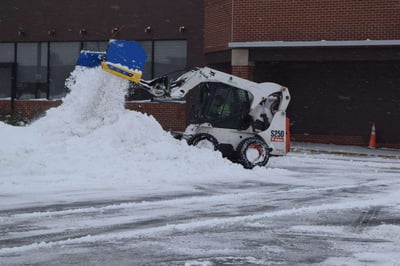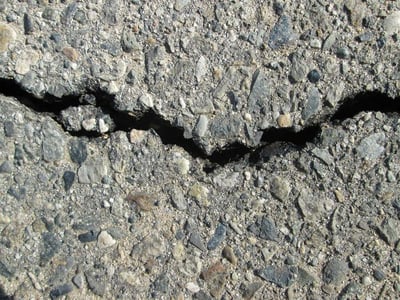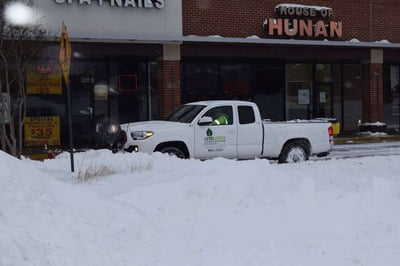
If you haven’t inspected your property lately for potholes, cracked sidewalks and clogged storm drains, grab your coat.
There’s still time before the next big snow.
Paul Weaver, construction manager at Level Green Landscaping, shares a few potential hazards you should check out before snow removal season, to keep everybody who visits your property safe.
“The number one reason we do snow removal in the first place is to avoid any injuries for your tenants, customers and employees,” Weaver says. “We need to keep our crews safe on the job, too. So the things property managers should be checking before a snow storm are also about safety.”
Here’s a look:
Look Down
Any damage to curbs, concrete, or asphalt can pose a danger once it’s hidden under the snow.
“If we cause any damage during snow removal, we’ll pay for it,” Weaver says. “Sometimes a skid steer hits and breaks a curb.” Accidents happen.
But if damage is there already, fixing it is up to you.
Is there anything protruding from the ground?
Manhole covers, water meter covers, utility hardware — all of these things stick up out of the ground an inch or so, Weaver says. That’s enough to catch the edge of a snow plow blade, snow blower or shovel.
Place safety cones or snow stakes by these things so our crews know to avoid them. Or ask us — we’re happy to do it for you.
Survey Your Surfaces
 Does your property have any bumps, hills or dips that are hazardous to drivers, pedestrians or snow removal crews?
Does your property have any bumps, hills or dips that are hazardous to drivers, pedestrians or snow removal crews?
Get them repaired or at least mark them before a big snow hits, Weaver says.
“If a piece of concrete sidewalk is sticking up even just an inch, our machines can hit that and break it,” Weaver says. “Maybe there’s a root lifting up the sidewalk. A pothole in the asphalt.
“Be sure you point out any areas of concern.”
Weaver tells of a customer that has a retaining wall on the property that was hit by a truck and weakened.
“That’s a huge liability,” he says. “We’ll work to fix it before the next snow comes, or at least stabilize it so it’s safe through the winter. Then we’ll fix it completely in the spring.”
Worried about your budget? We’ll work with you, Weaver says.
Check Your Drains
“A big part of snow removal is what happens to the snow after it melts,” Weaver says. “Make sure all your drains work properly before the snow comes. Once a pile of snow starts to melt, it can be a re-freeze hazard that can go on for weeks if your drains aren’t working properly.”
Mark each drain with two snow stakes so our crews know to avoid piling snow there.
Mark Fire Hydrants
“Fire hydrants are close to the curb, and we do curb to curb cleanup,” Weaver says. “We don’t want to hit them with a plow or a truck.”
Point Out Pavers And Retaining Walls
“A 5-foot mound of snow can cover up a lot of things,” Weaver says. “We don’t want to damage pavers and retaining walls.”
Paver areas need a rubber-edged plow blade — a regular blade can pull pavers up or damage them, he says.
Some pavers require a different, gentler ice melt product, too, he says, especially if they’re made of clay.
Prep Your Property For Snow With Level Green

When a big winter storm hits, you have enough on your hands without worrying about hidden dangers beneath the snow.
Survey for damage and potential dangers now.
“A little advance preparation solves a lot of problems,” Weaver says.
If you’re not already a Level Green Landscaping client, we’d love to add you to our growing list of happy customers.
Our focus is on commercial properties like offices, mixed-use sites, HOAs, municipalities and institutions in Maryland, Washington DC and parts of Virginia.
Contact us at 202-544-0968.
You can also request a free consultation online to meet with us one-on-one.
We’d love to hear from you.


